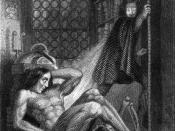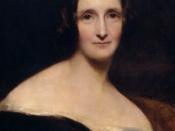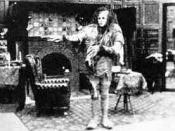Lecture Notes on "Frankenstein" and the Gothic
- Generally features strong elements of the supernatural, psychotic, sexually perverse or a combination of all three.
- Gothic usually featured dark, brooding setting: Damziels in distress.
- When Shelley wrote "Frankenstein" Gothic had gone out of fashion.
- 1818 Gothic played for laughs or reanimation.
- Shelley: no clear distinction between good and evil.
- She updates Gothic out of medieval world into her world. Fairly contemporary setting in mind. Key use of scientific debates of her day - electricity. Distinction between life and death debated.
- Paradigm - new historicism, and cultural matriculation loosely represented by Marianne Butler.
- The text in relationship to history is important, as there is a relationship between the text and the background. The historical contexts form a background to the texts themselves, and a text becomes fundamentally different from background, as it transcends it. Resulting from developed modes of reading, progress of research, or a lack of distinction.
A text has no borders as it participates in wider cultural and discursive society. The new historicist reading is a mix of anthropologist, historian and criticist. This is the way in which "Frankenstein" is to be read.
- In the case of "Frankenstein" Mary Butler relates it to a debate between materialists and vitalists.
- Vitalists: life is something added to matter - ie. Electricity. Experiments with seeing life through fluid means. Theologically positioned in the 19th century, leaves free room for the soul and biblical. This represents vitalist to the extreme.
- Materialists: Her husband wrote a defense of aetheism (Percy Shelley), which resulted in expulsion from Oxford University. It was dangerous to be an aetheist as there was no need for a soul. Early reader of the book would have had a very different perception.



O.K Hoba...
I read it. I rated it average. What you gonna do about it? I gave it average because I hate Frankenstien. Though I thought your study notes covered all the basics, were clear to read, and well organized. You could easily write an essay from this.
7 out of 7 people found this comment useful.